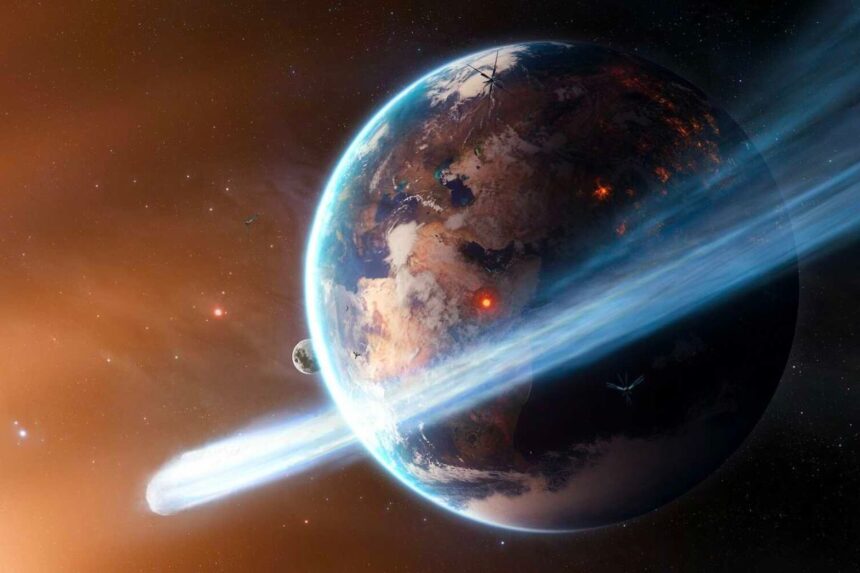A hazardous asteroid the size of a skyscraper is set to zip past Earth on Tuesday, September 17, 20241. This asteroid, named 2024 ON, has caught the attention of astronomers and space enthusiasts alike. But what does this mean for us on Earth?
What We Know About the Hazardous Asteroid
The hazardous asteroid 2024 ON is estimated to be between 721 and 1,575 feet (220 to 480 meters) in diameter1. To put that in perspective, it could be as tall as the One World Trade Center in New York1. This makes it one of the larger near-Earth objects that NASA keeps an eye on.
How Close Will It Get?
The hazardous asteroid will come within 620,000 miles (1 million kilometers) of Earth1. This is about 2.6 times the distance between Earth and the Moon1. While this might sound far, in cosmic terms, it’s quite close. NASA classifies any object that comes within 4.65 million miles (7.5 million kilometers) of Earth as “potentially hazardous”1.
The hazardous asteroid will be traveling at a speed of 19,842 miles per hour (31,933 kilometers per hour)1. That’s roughly 26 times the speed of sound! Its high speed and close approach make it a subject of interest for scientists.
Why Is It Called Hazardous?
The term “hazardous asteroid” might sound alarming, but it doesn’t mean that the asteroid will hit Earth. Instead, it refers to the potential risk it poses due to its size and proximity. NASA tracks these objects to ensure they don’t pose a threat to our planet1.
NASA’s Tracking System
NASA uses the Asteroid Terrestrial-impact Last Alert System (ATLAS) to monitor hazardous asteroids like 2024 ON1. ATLAS consists of four telescopes that scan the entire night sky every 24 hours1. This system helps scientists predict the trajectories of near-Earth objects and assess any potential risks.
Historical Context
While the hazardous asteroid 2024 ON is not expected to collide with Earth, it’s worth noting the impact of past asteroid events. For example, the Chelyabinsk meteor that exploded over Russia in 2013 was only 59 feet (18 meters) wide1. Despite its small size, it generated a blast equivalent to 400-500 kilotons of TNT, injuring around 1,500 people1.
What If It Did Hit?
If a hazardous asteroid like 2024 ON were to hit Earth, it wouldn’t cause a cataclysmic event like the one that wiped out the dinosaurs. However, its impact would still be significant. The energy released would be far-reaching, potentially causing widespread damage1.
Public Interest and Awareness
The approach of hazardous asteroids often sparks public interest and concern. It’s important to stay informed through reliable sources. NASA and other space agencies provide regular updates on near-Earth objects and their potential risks
Editor’s Recommendations
- SpaceX Starship to Mars, Elon Musk’s Bold Plan for 2026
- Latest Findings of JWST Reveals the Secrets of Star Birth at ‘Cosmic Noon’
- Mars Lost Water: What happened to all that water? New Information Revealed by NASA’s Latest Research
- SpaceX Polaris: Civilians Conquer Space with Historic First Spacewalk!




